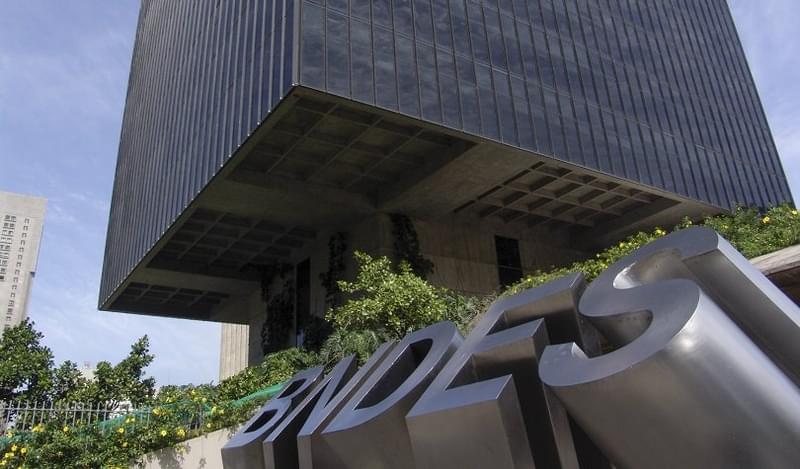BNDES was previously the biggest development bank in Latin American, investing heavily in large-scale infrastructure projects in Brazil. To give you a sense of its scale, between 2009 and 2013, BNDES disbursed three times as many loans (in dollar terms) as the World Bank.
But the end of a commodities boom and rampant government spending tipped Brazil's economy into a painful recession two years ago, forcing the state-owned lender to scale back dramatically. In 2016, loan disbursements from BNDES reached BRL88.3bn (US$28.1bn), its lowest level since 2007, and the first time since 2008 that disbursements fell below BRL100bn. In a statement, BNDES said disbursements were down 35% last year.
The industrial sector received most payments at BRL30.1bn, while the infrastructure sector obtained BRL25.8bn in financing, which were down 18.2% and 53.0% year on year, respectively, in 2016.
Towards the end of January BNDES revised its lending policies to focus more on projects that increase productivity and promote job creation, moving away from its fairly rigid sector-focused methodology for disbursements.
It is also bolstering its advisory capacity as it looks to double down on helping Brazilian corporates access the capital markets.
“[The bank] has basically replaced the logic of supporting sectors by new criteria giving priority to projects which result in greater economic, social and environmental benefits for society. The new policies aim to encourage more consistent growth of infrastructure, mainly through investments of the private sector. The goal is to increase the productivity and competitiveness of companies and funded projects, resulting in economic growth, job creation, sustainability and improved quality of life,” explained a BNDES official.
As part of the plan, the bank will raise the revenue threshold to classify small and mid-sized firms, so they have preferential access to credit.
With the new guidelines, the bank wants to incentivize companies or projects in those sectors to access credit at below-market long-term interest rates (TJLP, the benchmark for BNDES loans), a move that could see up to 1,500 firms across Brazil could gain additional access to credit. In 2016, 30.8% (BRL27.2bn) of the bank’s disbursements went to SMEs, up from 27.5% the year before, but it looks like 2017 could see the portion of loans disbursed to this segment rise as high as 34%.
According to Ramon Aracena, Chief Economist at the Institute for International for International Finances (IIF), these new policies could kick-start growth in the short term as the banks withdraws from large infrastructure projects, but it is not clear whether private sector lenders will pick up the slack and extend their own balance sheets.
In 2016, the Temer administration passed a law allowing foreign companies in a multitude of industries to receive funds from publicly owned banks to support their in-country operations, enabling BNDES to provide financing to non-Brazilian companies involved in Brazilian projects.
This moves amends a 1962 law listing a few sectors “of high national interest,” for which public funds could be allocated to foreign firms. The list now includes infrastructure in telecommunications, ports and transportation, environment and sanitation, as well as petrochemical, mineral and agricultural, industrial complexes. Information and communication technologies, oil and gas, healthcare, textiles, education services, energy efficiency services and the commercial sector.
The move was intended to encourage foreign and domestic private lenders to help finance the massive infrastructure developments Brazil needs to support long-term growth.
The bank is also actively looking well beyond its borders for new sources of revenue. Early this year, the government announced a partnership with China that will see the two countries create a US$20bn fund that will go towards infrastructure projects in Brazil including government-sponsored roads, ports, airports, and logistics operating licenses. The move will see BNDES and Caixa Economical Federal put up US$5bn of its own balance sheet.
Rumours are also swirling around whether a similar plan, though on a much smaller scale, is in the works with German development bank KfW.
Corruption Still a Headwind?
In September 2016, Brazilian police announced it would investigate overseas financing provided by BNDES, linking the lender to the country’s sweeping Lava Jato corruption probe.
The investigation focuses on illegal payments made in exchange for BNDES loans in the Dominican Republic, Angola, Cuba, Panama, Ghana, and Mexico. Since 2009, BNDES has committed US$7bn in funding in 25 construction projects outside Brazil’s borders, but only US$2.3bn has been disbursed to date.
In October 2016, the bank announced it would cease all payments, leaving a trail of unfinished projects from Latin America all the way to Africa.
Since the revelations came to light, BNDES has imposed a series of new rules to ensure greater transparency at home and abroad. Contractors will be required to sign compliance agreements that impose sanctions for impropriety and no new funding for engineering projects overseas will be approved before revised rules are issued, which probably won’t happen until the fourth quarter of 2017.
“The government is putting a big emphasis in transparency; the point is that if you are receiving money from the government, you have to uphold international transparency standards,” Aracena added.









